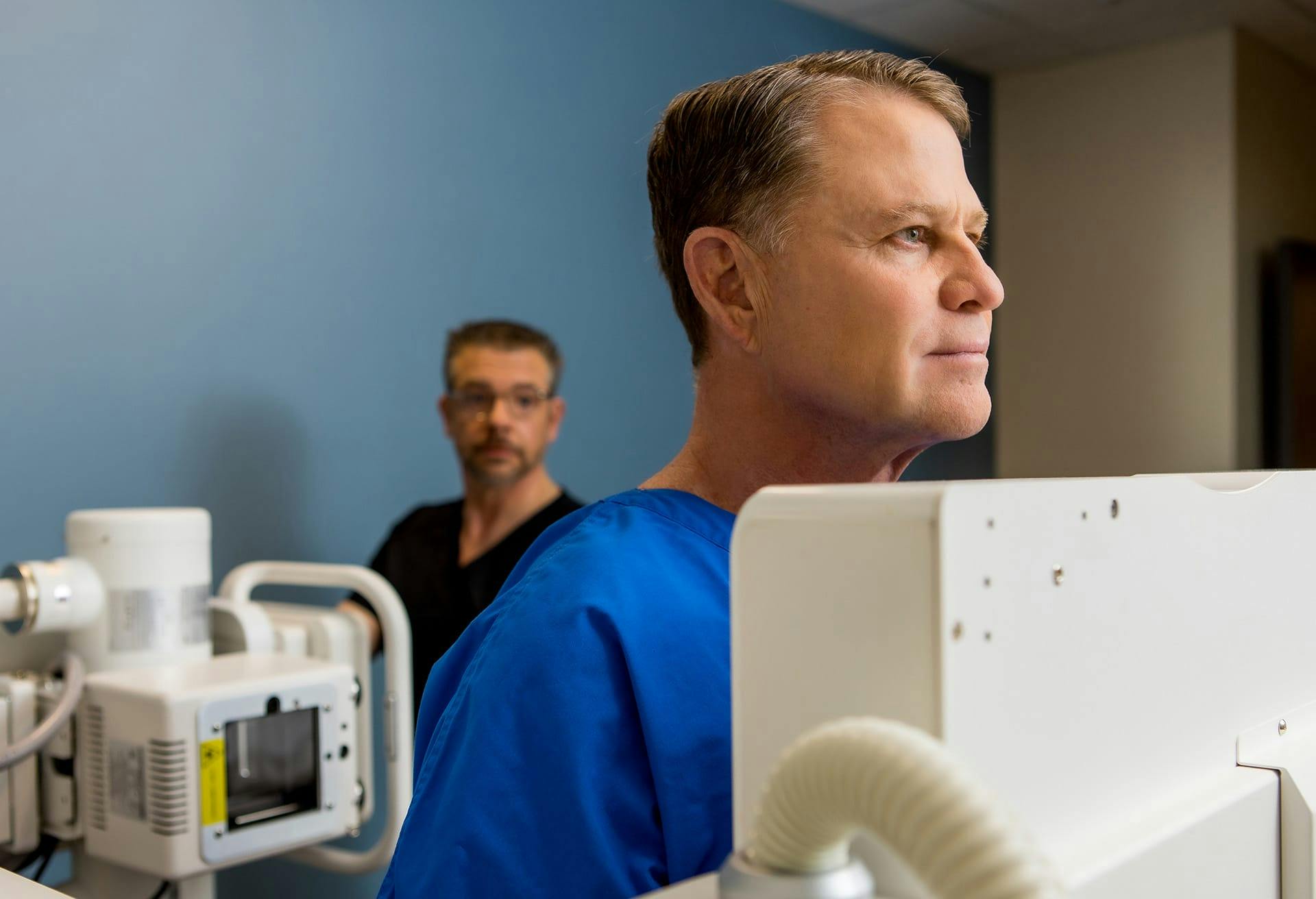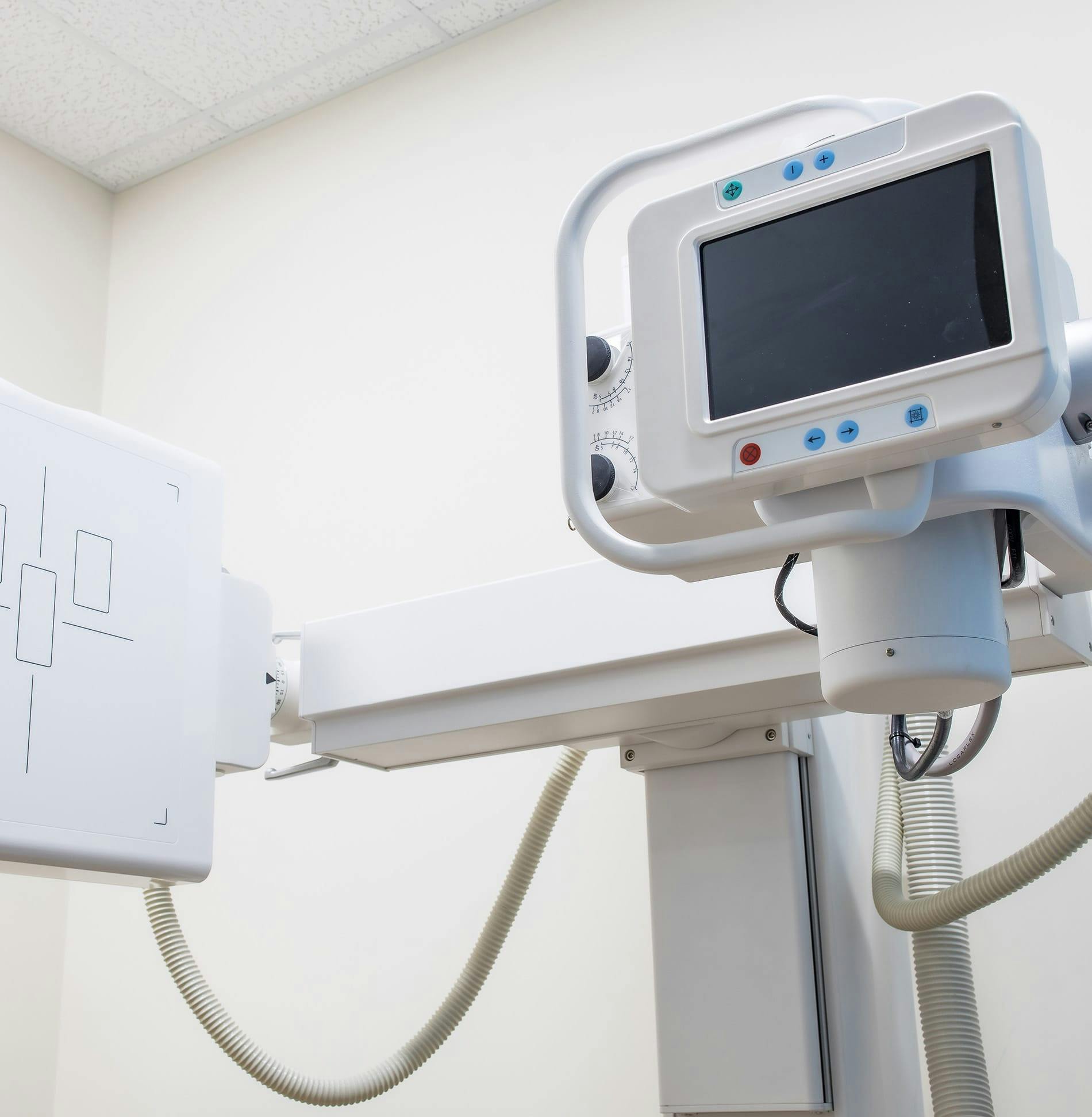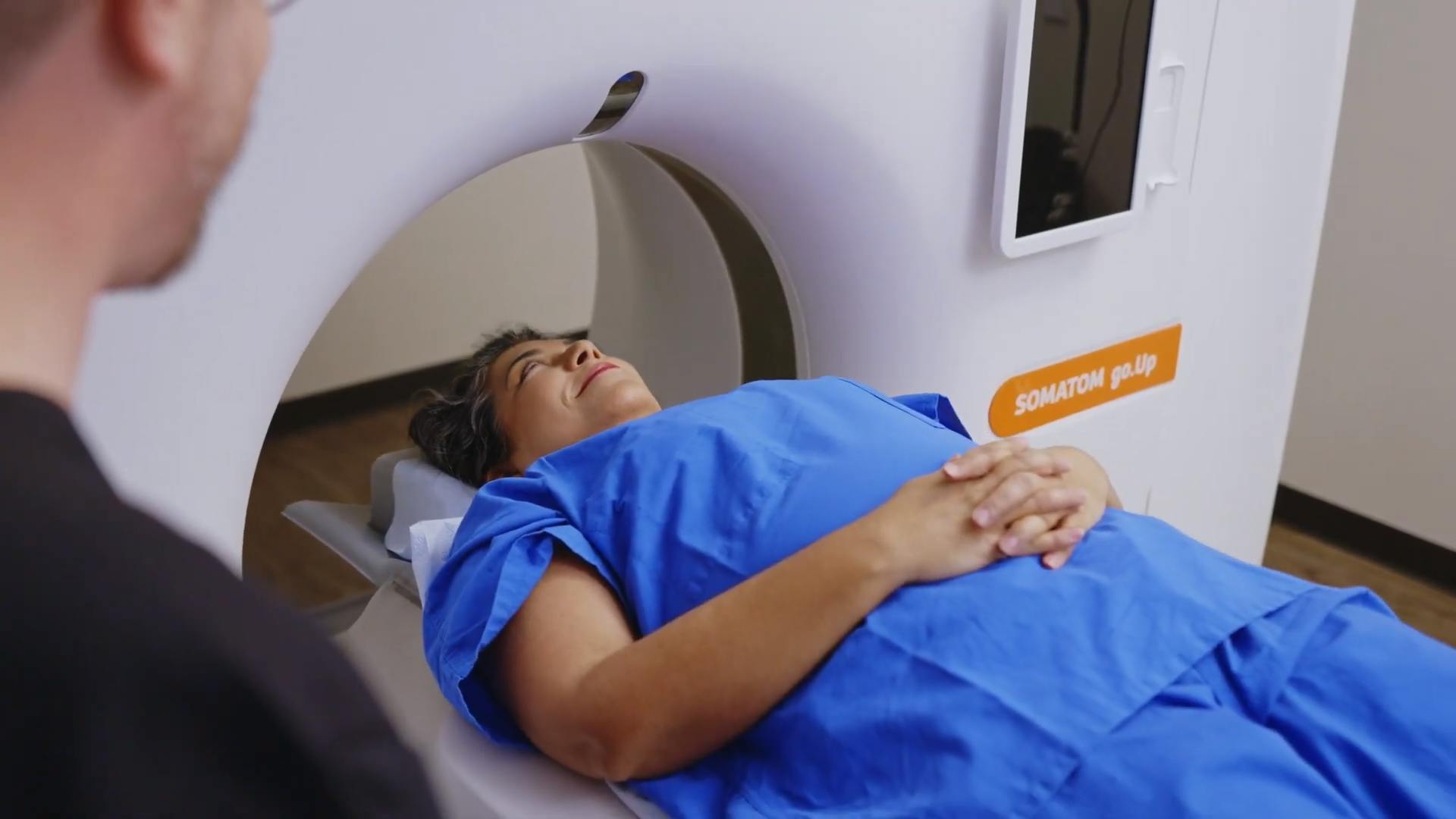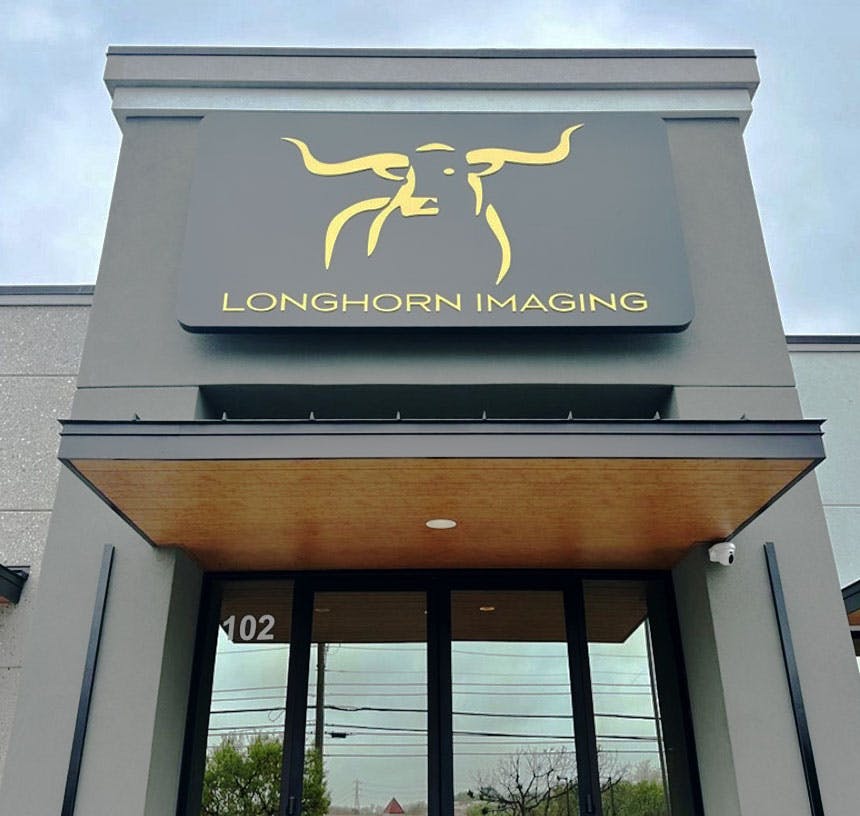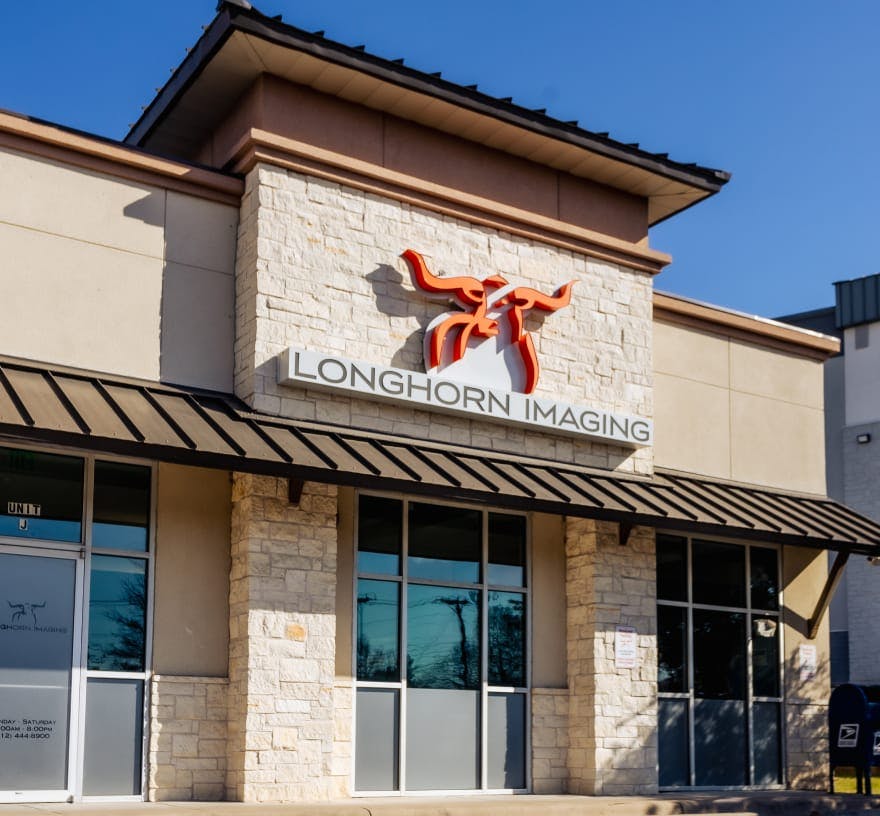Clear, Comfortable X-rays
X-rays are invisible, high-energy light rays with a very short wavelength. These properties enable the energy to pass through many materials. Since X-rays can easily pass through skin, but not bone, healthcare professionals use them to take photographs of a person’s skeleton and other internal structures in a fast and painless manner. X-rays allow doctors to see, search for, and track abnormalities inside the body without making a single incision, giving them the necessary information to make better, more accurate diagnoses for a meaningful improvement in quality of life.
Allow our friendly, professional staff at Longhorn Imaging to make your experience comfortable and easy. We deliver X-rays with warm, personalized care at our imaging centers in North Austin, South Austin, Cedar Park, Killeen, Marble Falls, Bastrop, and Onion Creek.

